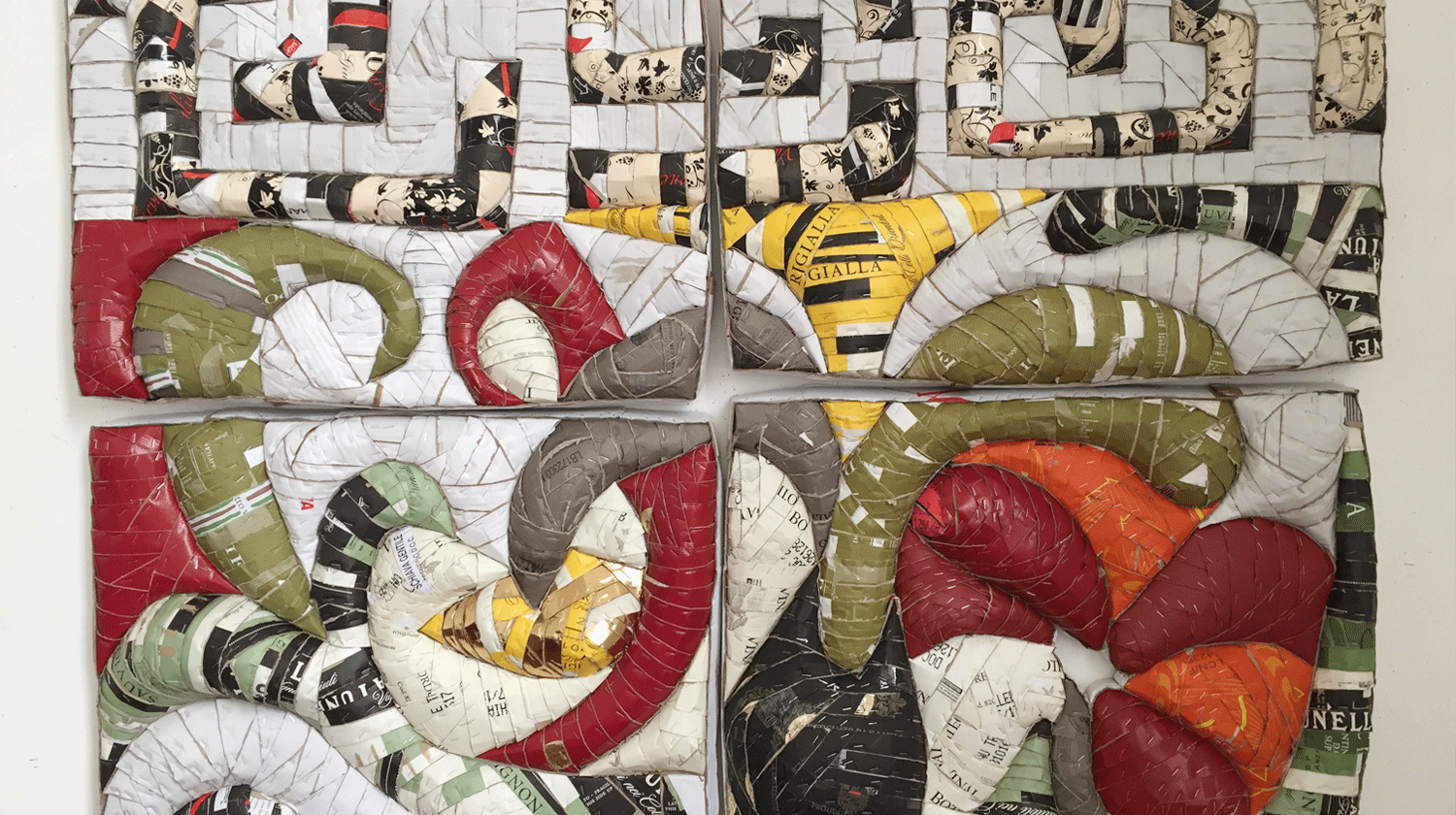
(Carson, CA) “Uncommon Materials,” an exhibit running Oct. 24 through Dec. 15, 2018 in the University Art Gallery at California State University, Dominguez Hills (CSUDH), features contemporary Los Angeles artists Aubrey Ingmar Manson, Garry Noland, and Ann Weber who transform recycled and discarded materials to create unique mixed media works.
WHAT: “Uncommon Materials:” featuring contemporary L.A. artists Aubrey Ingmar Manson, Garry Noland, and Ann Weber
WHEN: Oct. 24 to Dec. 6, 2018. Hours: Monday-Thursday, 10 a.m. to 4 p.m.
OPENING RECEPTION: Monday, Oct. 24, from 5:30 to 8:30 p.m., featuring a conversation with the artists led by Jim Keville, associate professor of studio art at CSUDH.
WHERE: University Art Gallery, LaCorte Hall, A-107.
ADMISSION: free
FOR INFORMATION: (310) 243-3334.
The exhibit will include Weber’s large biomorphic sculptures created from discarded cardboard, Noland’s assemblages of found and reclaimed materials, and Ingmar Manson’s use of $0.99 store napkins to mold large scale wall sculptures reflective of feminist and political themes.
Weber’s sculptures are woven together from strips of cardboard boxes she culls from local grocery store dumpsters. Her universal forms present the viewer with a series of organic forms reminiscent of the art of Jean Arp, Louise Nevelson, and Louise Bourgeois.
Noland explains his combination of the old and new in his art. “Base materials, such as PVC pipe or dock foam, are combined with new materials, such as bubble wrap, marbles, paint and duct tape. The resulting combination sets up the inevitable dialogue between the new/old, purposeful/accidental, and play/toil.”
Ingmar Manson wrote that her layered and sensuous sculptures offer lush and playful femininity, yet a vein of unease running through her molded surfaces. “This anxiety shows through with the material transformation of cardboard, $0.99 store napkins, plaster and ceramic that is accumulated, preserved, battered, or fawned over. The resulting form is pillowy and can represent distorted female bodies, beds, and blankets.”